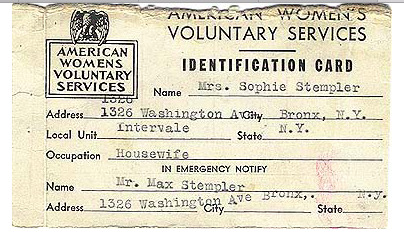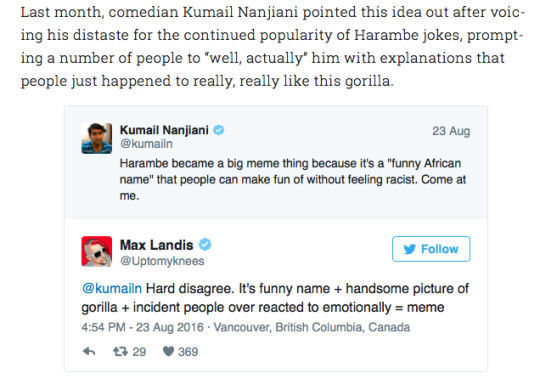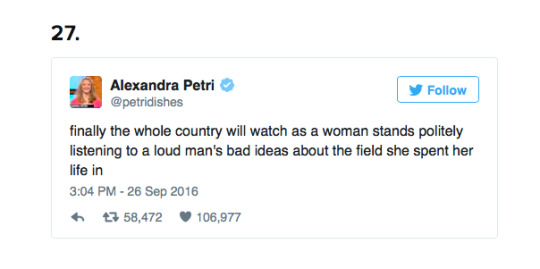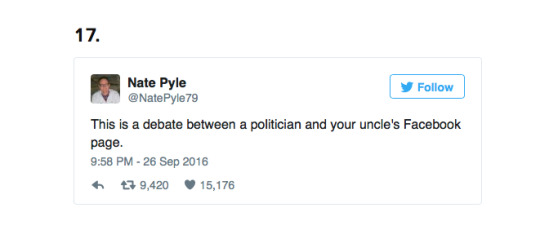Don't wanna be here? Send us removal request.
Text
Hoping/ Failing (Regina)
Sophomore year of high school was the first time I had ever heard of different “types” or “categories” of lesbian women. My advisor in high school and I were very close and she was about to introduce me to her most recent girlfriend (I had met a few before). Before we were introduced, my advisor was giving me to low-down on her new relationship: how they met, how long they’ve been together, etc. but she also joked that I will notice she has a “type’’, butch lesbians. When I asked why someone would be considered butch she drew the comparison between butch and “lipstick,” a term I had never heard before that conversation. In her eyes, my advisor was a lipstick (femme) lesbian, she loved dressing up and make up and spoke in a high register, while the type of women she preferred to date over and over were butch (more masculine), they wore short hair, spoke low, and dressed more androgynously.
I have always found it a bit bizarre that my first memorable introduction to these “categories” of femme versus masculine lesbians materialized in my real life and was presented in such a way as if to assure me that her relationship still accurately fulfilling the gender norms of femme being supported by masculine, I think she even mentioned she prefers when her partner makes more money than her.
It’s a narrative that was surely simplified or watered down to me given the circumstances and the (probably accurate) assumption I wouldn’t be able to keep up with a deeper conversation about the nuances/background/severity of pressures related to passing and needing to fit into a “Categories” etc. But this “water-ed” down version of a female homosexual relationship that I was introduced to is one I think is repeatedly portrayed on television, this idea of lesbian-lite. Further, Halberstam explores how the portrayal of a lesbian relationship often excludes butch women as anything besides a failure of femininity.
In “The Queer Art of Failure,” Halberstam writes that on television, the butch lesbian cannot seem appealing: “[the butch lesbian] threatens the male viewer with the horrifying spectacle of the “uncastrated” woman and challenges the straight female viewer because she refuses to participate in the conventional masquerade of hetero-femininity as weak, unskilled, and unthreatening.”
I have seen this idolization of the femme lesbian over and over. This Slate article (below) goes further, but first asks the question, “Why are there no butch lesbians on television?” While I don’t love every aspect of this article I thought there was an interesting point early on. The author sarcastically jokes that it was sad before when the legitimate existence of lesbians was ignored on television. But now, now, it’s a great time to be alive because “in this exciting new era, lesbian women grow up knowing that rather than being largely immune to society’s punitive and unrealistic standards of female beauty, they, too, can spend their lives in pursuit of them. Hoo. Ray.”
http://www.slate.com/blogs/outward/2014/04/17/butch_lesbians_on_television_why_are_all_the_television_lesbians_femme.html
I think the video in Aaron’s curation with Kory DeSoto and his “how to be masc” satirical video captures and embodies the expectation put forth online and on television to be a certain kind of gay, a certain kind of femme, a certain kind of beautiful, with no room for failure.
1 note
·
View note
Text
Asian/American (Regina)
I began writing this post about Ex Machina and the character named Kyoko, and how this actress was not given one line in the entire film, and how it is not revealed at first that she is not human and yet it doesn’t seem to matter- she already wasn’t being treated any better than a servant, and ALSO if Nathan made her he MADE THE DECISION to not allow her to talk, or understand English. I was trying to work through this when I went to google the name of the actress (Sonoya Mizuno) and found this blog post titled, “How Ex Machina Abuses Women of Color & Nobody Care Cause It’s Smart”: http://multiasianfamilies.blogspot.com/2015/05/how-ex-machina-abuses-women-of-color.html
In the post the author (Sharon Chang) comments, “You wouldn't know it from the plethora of glowing reviews out there cause she's hardly mentioned (telling in and of itself) but there's another prominent fembot in the film. Maybe fifteen minutes into the story we're introduced to Kyoko, an Asian servant sex slave played by mixed-race Japanese/British actress Sonoya Mizuno. Though bound by abusive servitude, Kyoko isn't physically imprisoned in a room like Ava because she's compliant, obedient, willing.”
We have spoken in this class about the difference between the actor and the performance/performed character. This actress does not have one line, and her character is hardly mentioned in reviews of the movie as the blog post writer brings up. Kyoko was designed to be “compliant, obedient, willing,” and was the only female manifestation that seemed possible to Nathan (and movie creators) a small, petite Asian woman?
“Unfortunately the treatment of Kyoko's character just keeps spiraling. We continue to learn more and more about her horrible existence in a way that feels gross only for shock value rather than for any sort of deconstruction, empowerment, or liberation of Asian women. She is always at Nathan's side, ready and available, for anything he wants. Eventually Nathan shows Caleb something else special about her. He's coded Kyoko to love dancing” (Sharon Chang).
The framework of bondage Asian/ American women was certainly not considered in an open-ended fashion, as Shimuzu suggests in “Hypersexuality”
Shimuzu “The framework of bondage and the bind aims to capture the restrictions and constraints limiting Asian/American women’s choices, made within aggravated situations in order to open the possibilities of redefining sex, race, and representation in an open-ended fashion, rather than shutting them down.” (17)
Sharon Chang goes on to critique the Ex Machina writer and director Alex Garland, pointing out that making his Asian characters (and other actors of color) two-dimensional and rationalizing that choice is a pattern among his work. Lastly, if you are interested, the blog includes a quote of Garland’s from an interview with Cinematic Essentials (http://www.cinematicessential.com/interview-with-alex-garland-writerdirector-of-ex-machina/) commenting on stereotypes in Ex Machina: “So, in terms of the races of the women inside the closets for example, there isn’t an embedded point in there. Sometimes you do things unconsciously, unwittingly, or stupidly, I guess, and the only embedded point that I knew I was making in regards to race centered around the tropes of Kyoko [Sonoya Mizuno], a mute, very complicit Asian robot, or Asian-appearing robot, because of course, she, as a robot, isn’t Asian. But, when Nathan treats the robot in the discriminatory way that he treats it, I think it should be ambivalent as to whether he actually behaves this way, or if it’s a very good opportunity to make him seem unpleasant to Caleb for his own advantage. So, for example, when Kyoko accidentally tips over the wine glass, did Nathan program her, or tell her, to knock over that glass?”
1 note
·
View note
Link
NYTimes article from 1995
1 note
·
View note
Link
NYTimes article from 1995 speaking about the Clinton appearance in Huairou explored in “Gender & Neoliberalism”
1 note
·
View note
Link
Explore this project. There is a promo video and also links to several reports that have since been uploaded.
1 note
·
View note
Video
tumblr
American Women’s Volunteer Service Sees Enrollment Rise
1 note
·
View note
Link
“ I can safely say that I have learned more about myself and my place in the world during the last year as a stay at home mother than I did for the entire duration of my degree or the time I spent in paid employment.”
1 note
·
View note
Link
“The LFLRA was fundamental in the struggle for a 10-hour workday. The nature of the group allowed for a unique argument to be made. The LFLRA pointed out that women were expected to raise the next generation of men, something that they could not adequately do with a twelve-hour workday. Labor issues were not the only things pursued by the LFLRA; women’s rights were also a prominent concern for the group. As Sarah Bagley, the president of the LFLRA, stated at the first meeting of NEWA, “For the last half century it has been deemed a violation of a women’s sphere to appear before the public as a speaker; but when our rights are trampled upon and we appeal in vain to legislators, what shall we do but appeal to the people?” It was through the crusade for a 10-hour workday that many women found themselves liberated from narrow family and work roles and thrust into the world of politics and public debate. Not only did the LFLRA make strides for working people everywhere, it also helped many women find their public voice.”
1 note
·
View note
Photo






1 note
·
View note
Text
Working Women Primary Curation
Hi Everyone, sorry I had some confusion about which account I was posting from (still learning how to use tumblr) so that was all fragmented. I deleted the original posts and I am posting now with it all together.
1 note
·
View note
Text
Displacing the Subject (Regina)
Reading the conversation between Judith Butler and Athena Athanasiou reminded me of several things I learned in the Columbia Anthropology class, Interpretation of Culture. Throughout the semester, we read and spoke about how the invention of kinship and the structure of the anthropological family and then down the line came the invention of incest. I should absolutely say that I may not be accurately recounting the curriculum. But, when we explored the topic of incest, it was presented that incest was created as a tool to ensure women could continue to be commodified, used as gifts as exchange to communities and thus as currency to ensure prosperity (aka: you can’t be with your daughter or sister so you must give them away to someone else (a man) and expand your power). After considering this reading, I know see the heteronormative lens through which this material was taught. Part of the class description reads, “Through a close reading of classic and contemporary ethnographies, we will examine how the discipline of anthropology emerged from, responded to, and changed the ways we think about culture and capitalism; colonialism and postcolonialism; and sameness, difference, and alterity.” (Professor Povinelli) Yes, “difference” and “alterity” are included in the list of lens explored, but after considering these two quotes in particular, I believe the class failed to include very relevant discourse surrounding the transphobic and heteronormative influences of these concepts:
“Transgender suspends the certainties of having versus not having upon which the classic diabetics of recognition is premised in the realms of desire and kinship” (Athena Athanasiou, 56)
“...the incest taboo has been instrumentalized to produce a heteronormative framework for both sexuality and kinship” (Judith Butler, 62)
Lastly, for anyone particularly interested in this concept that Butler brought up: “queer kinship has always been rough from ties between ex-lovers...” (62) reminded me of some reading material from this course I took:
Kath Weston, “Exiles from Kinship” in Families We Choose
On a completely different *side* note, I was struck but how much the anecdotes and exploration found in “The White to Be Angry” seemed to me as potentially relevant/helpful to several people’s paper topics. Muñoz’s mention of trans bodies and trans body portrayals in mainstream media, reminded me of Waverley’s exploration of Caitlin Jenner and her network television show. Muñoz’s anecdote of being in a lower Manhattan bar where the “boys are not the beefy pumped-up white and Latino muscle boys of Chelsea” (103) reminded me of Aaron’s paper looking at the difference in performance styles depending on the neighborhood. For me, I found Muñoz’s retelling and remembering of different punk band and music influences particularly relevant to my topic.
1 note
·
View note
Text
Digital Divides (Regina)
Before I read my classmates’ posts, I was struggling to make sense of the readings. One, the print was small, so my eyes didn’t want to work so hard to read words I don’t know. But also, I think I was struggling to envision what was being considered. Now, after having read through these posts and considered questions brought up by my peers, I have a much better idea of what was being explored. This is, first of all, an example of where technology has enhanced my experience and relationship with individuals, contrary to the sentiments of “Touchscreen” (though I do think that is a very beautiful piece).
The video Rowan posted, “Amazing Tron Dance,” brought up some questions introduced in “Identity, Performance and Technology.” Of course I marveled at the spectacle that was the dancers being strategically illuminated to seem as if they are disappearing and reappearing out of the darkness. The luminescent suits they wore also captured a very “tech-y” “avatar” kind of character. But overwhelming I had to question the mixed reality paradigm, a term Evie generously outlined for us from the reading. The dancer on stage embodied both themselves and their avatar, with the illumination of costume defining the difference. To the spectator, when the lights are off, that body is gone from the show, gone from sight, gone from consideration. And yet, of course the body is still there. I question the doubling presence of body and avatar, when both are housed in one? I think film really has the advantage of effect because in person, a performance like this may ask for suspension of reality (i.e., you can still see the outline of bodies, hear their feet scuffling, etc.)
Just as a little treat, I wanted to post a Beyonce video that came to mind when considering both readings. her 2011 Billboard Awards performance of “Run the World” was supplemented with this avatar technology, “manipulation” of projections background. This was the first time I ever saw something like this before. Of course it isn’t as impressive or precise like the “mesmerizing dance performance” video, but it was also 2011.
https://www.youtube.com/watch?v=5EwZ_AzDDM4 (performance starts at 3:00)
1 note
·
View note
Text
Denaturing the Body (Regina)
The primary curation for this week is one that simultaneously excited and frustrated me. The video speaks to the exaggeration and misunderstanding of people suffering from PMS and supports a reconsideration of ailments that are labeled as scientific and thus, the Truth (capital T). I joked with Waverley at dinner about what would happen if we went around to students eating their meal in Hewitt and filming how they’d respond to being told they probably don’t actually experience PMS. I imagined outrageous and angry responses; individuals asking us how dare we question the pain/discomfort they feel every month. Waverley thinks they’d simply kick us out of Hewitt.
Then I started considering where else in my life I have been unreasonably manipulated under the assumption of science as undeniably true (totally agreeing with Evie’s sentiment about having never questioned the legitimization), and thus have considered my feelings in relation or as a result of what I imagine to be true. I started thinking about my birth control, I’m on the pill. Since high school I have used the same brand consistently (called Kariva), and then this September, when I picked up my prescription, my birth control had a new name and size and look (called Viorele). The package had the stickers, “Your medication may appear different in color but is the same.” I have never been someone who noticed how my birth control affects me. I am always amazed when people say that they know their birth control affected their mood because I am utterly clueless in this regard. Any stress, sadness, anger I feel I don’t know if I should contribute to my birth control, to PMS, to this stressful community, or the anxiety that has only developed since being here.
So I searched online to learn about this new brand, which turns out to just be the generic version of the one I have been taking. But still, the internet freaked me out (yes, this is from WedMD..I’m sorry). I know that this medication is entirely the same as before (I called my doctor), and my lifestyle has not changed dramatically from before, and yet after reading about other people’s horror stories, every month I am convinced that experiencing unusual mood swing, anger, and emotions. I take Midol and apologize for my behavior or mood. This week’s reading and curation was very insightful, and if nothing else, has made me more confident to fight against what the internet is trying to make me feel.


1 note
·
View note
Text
Primitivity and Postmodernism (Regina)
Harriet Washington’s exploration and detailed story telling about the history of human exhibitions of black bodies in zoo and circus “freak show” settings was particularly upsetting considering that very thinly veiled elements, influences, and attitudes of those times that are still hugely present on the internet today. I was reminded of the unreasonably popular meme sensation of “Harambe,” the 17 year old gorilla that was shot in the Cincinnati Zoo. Endless jokes and trolling campaigns have been made, and seem to frequently resurrect, regarding the death (and afterlife) of this animal all over the internet and beyond. Many spoke out about the racist nature and hypocrisy of the meme sensation.
From a Fusion article titled, “Your favorite Harambe memes are racist. It’s time to stop using them” (http://fusion.net/story/346541/death-to-harambe-memes/):

The article continues on to cite other instances when the “joke” of Harambe’s untimely death was blatantly racist. Like, when associated with comedian Leslie Jones, a black woman. Hackers posted nude pictures of her on her personal website page along side a video of Harambe, suggesting a comparison is to be made of the two. On page 92 in “Circus Africanus” Washington writes, “Many scientists who were enamored of Charles Darwin’s 1859 theory that posited how apes and men sprang from a common ancestor also believed in an embellishment: that a continuous chain of evolution linked apes and men and that the subhuman “missing link” was still extant. Scientists swarmed Africa in search of candidate subhumans.”
Washington explains how the incessant abuse, exploitation, harassment, and violations that these individuals, the subject of the shows, were justified in the name of science. They were considered potential members of the subhuman species, an in-between entity evolutionarily departed from the ape but not quite as developed as the white human. And thus were to be publicly dissected in the spirit of science and scientific advancement.
Those who have spoken out against the Harambe memes have been mocked and marked as negatively perpetuating “PC Culture” and have been dismissed as needing the “chill out” or “get a sense of humor”. Check out the response to two UMass Amherst RAs prohibiting the display of Harman memes in public space:
“In any case, the warning appears to have fallen on deaf ears. ‘We will stand by our friend [Harambe] no matter the consequences,’ UMass student Jarod Sasdi told Campus Reform. He said the RAs had their judgment “clouded” by a lack of knowledge of Harambe and what he represented.’”
http://dailycaller.com/2016/09/06/umass-amherst-harambe-jokes-are-racist-violate-federal-law/
To me, I don’t see how defending Harambe jokes and calling them just harmless, non consequential trolls is very different from justifying the enslavement and public dissection of black bodies as entertainment and fundraising for the white spectator. I don’t think we can ignore the history embedded in the internet’s instinct to associate gorillas with black individuals and the freedom internet users feel to spread these racist connotations hidden safely behind the humor of internet meme sensational movements.
1 note
·
View note
Video
youtube
Jack Halberstam writes, “it becomes increasingly clear, in many places, that sexual tolerance is only used to free up new avenues for capital...” (129). To me, that’s an interesting thought after watching these videos and considering the music industry and how “sex sells.” It can hardly be argued otherwise that Selena and Ariana expressing their sexuality so openly is only encouraged in a setting where they’re selling their music through via selling their sexuality, or rather selling the idea that you could possibly have sex with them. Only in a music video, where the male gaze (aka the camera) is exploring their bodies and the female body, the object of desire, is just a cog in the wheel of consumerism is it okay to seem sexually open. Just as it was mentioned by other classmates, Teyana Taylor can be an openly and actively sexy woman as long as it’s for the art, for Kanye, for the money, and not out of wedlock. These videos also made me consider the blatant heteronormativity of every single video. When trying to think of one relatively well-known music video that celebrates the relationship of individuals outside of heterosexuality, I could not. Instead I thought of what a huge deal it was when Madonna and Britney Spears shared their ‘iconic’ kiss. When I went to Google a video or article, Google already had some pre-made answers. I typed in “madonna britney kiss” and Google gave me:

Thanks, Google! In addition to this, there are tons of articles about why they kissed, who set up the kiss, what did the kiss mean, was this kiss better than when Madonna kissed Drake? Are Britney and Madonna lesbians? Is Christina Aguilera jealous? OR, even better, does the camera going straight to Justin Timberlake’s (who I presume was in a relationship with Britney at the time) expressionless face mean that he is or SHOULD be mad/disgusted/shocked by what happened. In one, very obvious (to me) way, this publicity stunt was tasteless in the sense it made a mockery of lesbian relationships, perpetuating an attitude of shock and discomfort and fetish surrounding two kissing. But in another way, the stunt could be viewed as a magnification or exploitation of the limitation of “gender and sexual variance” promoted by the United States. Halberstam describes the ripple -effect of this variance in other parts of the world: “Many of the queer people I met in Japan told me how frustrated they were when anthropologists would come and “study” them as if they were strange creatures in a zoo. They felt oppressed rather than liberated by the imposition of terms for gender and sexual variance that had been made popular in the United States and that were presumed to have universal applicability” (131-2). What is MTV saying when they believe two iconic, known as heterosexual, women kissing will increase rating and tabloid activity. MTV and other music big names live by selling sex. Here, they make money off of selling brief hints at homosexual sex. But when have they done that with individuals who openly live by and express their homosexual or pansexual preference?
2 notes
·
View notes
Photo






Just some of my favorite responses from the internet (and NYTimes Reporter, Maggie Haberman).
0 notes